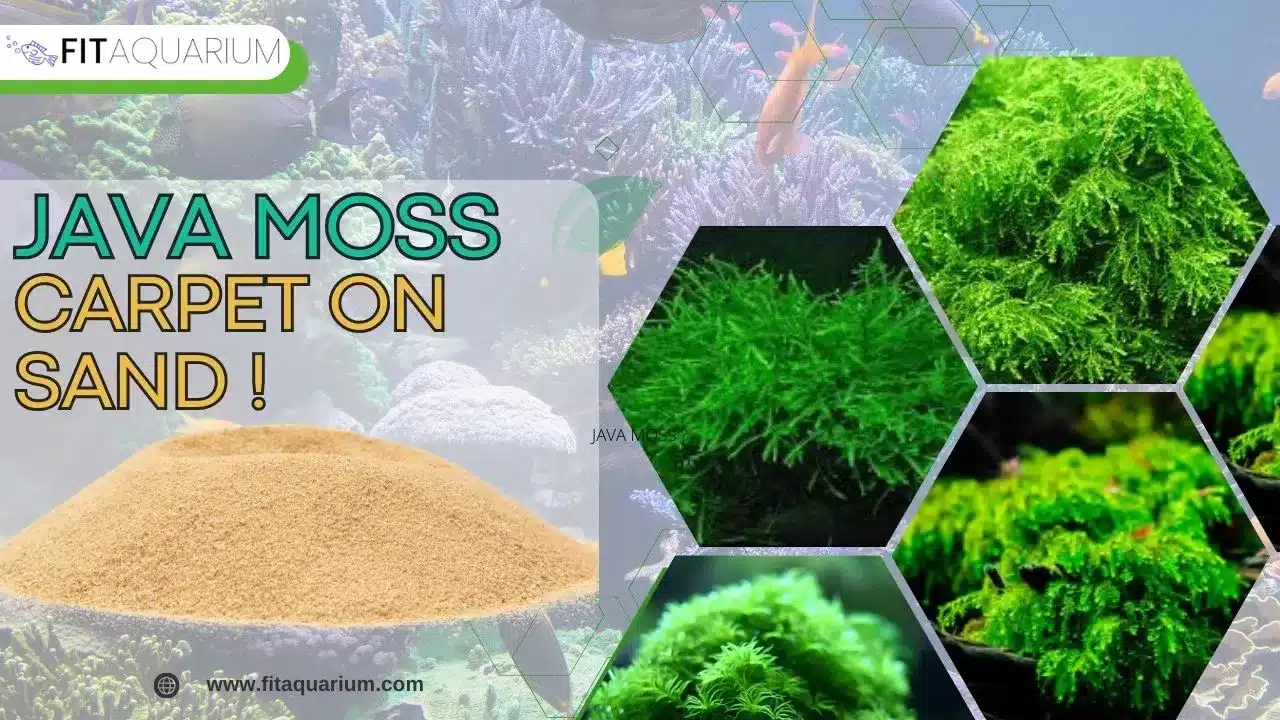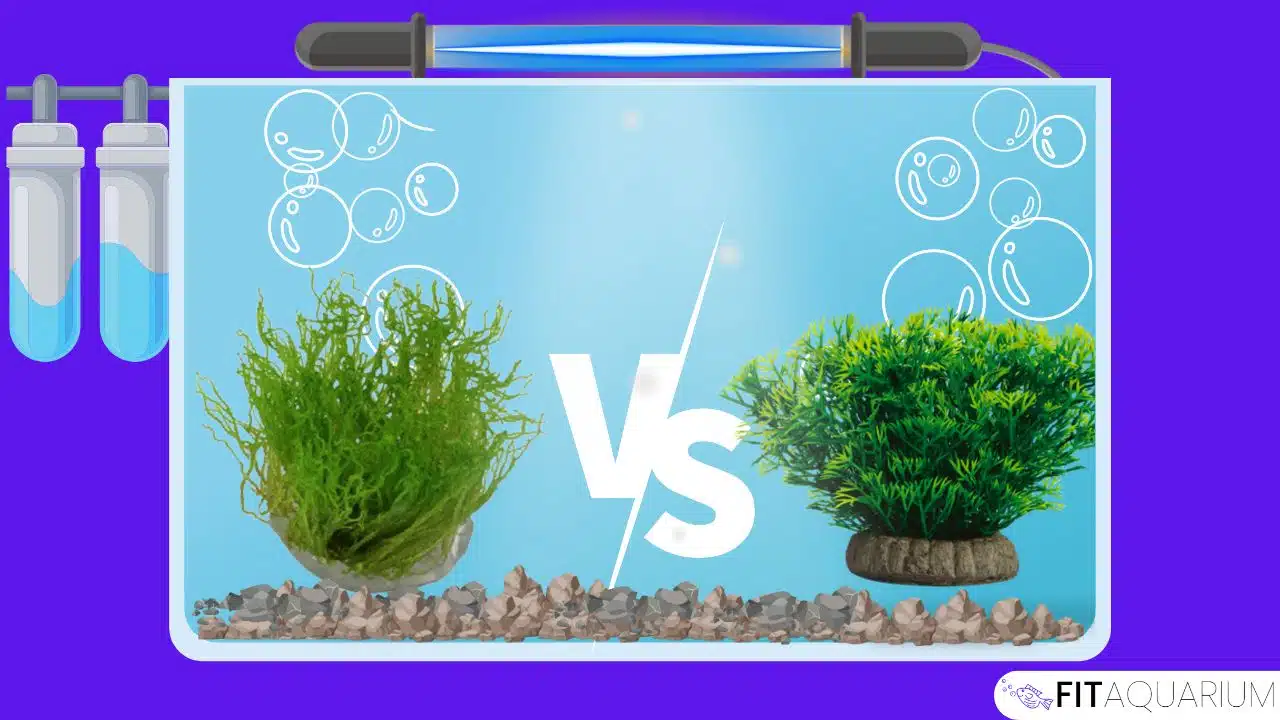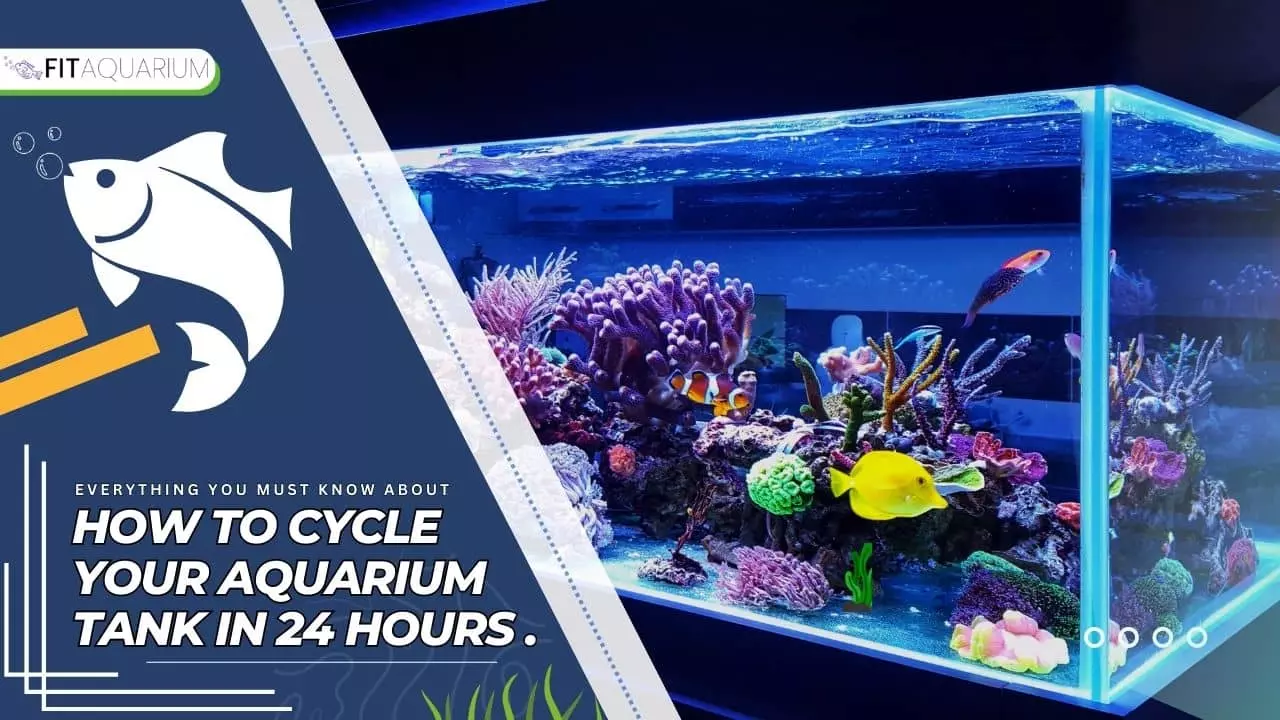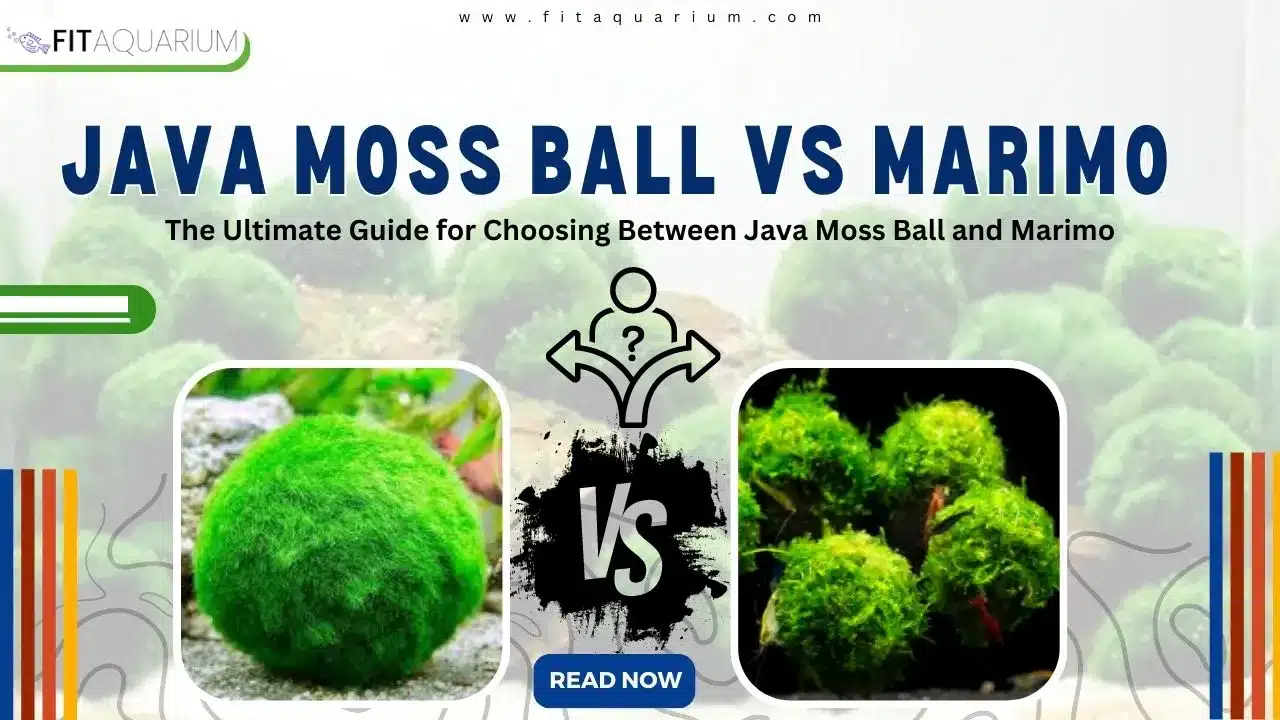Java Moss Carpet on Sand
Mosses, the most adaptable and attractive aquatic plants, are used to decorate various types of surfaces. Java moss (Taxiphyllum Barbieri) which comes from the tropics of Southeast Asia, is mainly used to create a lush and natural-looking carpet on the bottom of an aquarium tank. This carpet of tiny plants is very useful in creating a comfortable and satisfying place for your fish to hide and explore. But what if you prefer to create a beautiful green java moss carpet on sand instead of on a bed of gravel?
In this article, we will explore more about how to create a java moss carpet and whether is it possible on a bed of sand or not.
Table of Contents
Can Java Moss Grow on Sand?
First of all, you must be aware of the fact that is it possible to grow Java moss on sand. The answer is yes! However, some aquariums and terrariums can’t permit sandy bottoms.
Java moss can’t grow on the sand by itself, it needs a bit of help from you.
Actually, Java moss has tiny root-like structures named Rhizoids. These Rhizoids act like Java Moss’s hands, which it uses to grab itself on rough surfaces. So, rhizoids help java moss to grab onto rocks, driftwood, or even on the surface of aquarium glass in fresh water.
Factors Affecting Java Moss Carpet on Sand
If you are trying to grow java moss carpet on sand, you should know what java moss needs to grow on sand. To boost the growth of Java moss on sand, some factors are discussed below:
- Coarse-grain sand
- Fertilizers
- Proper water parameters
- Sufficient light
- Carbon dioxide
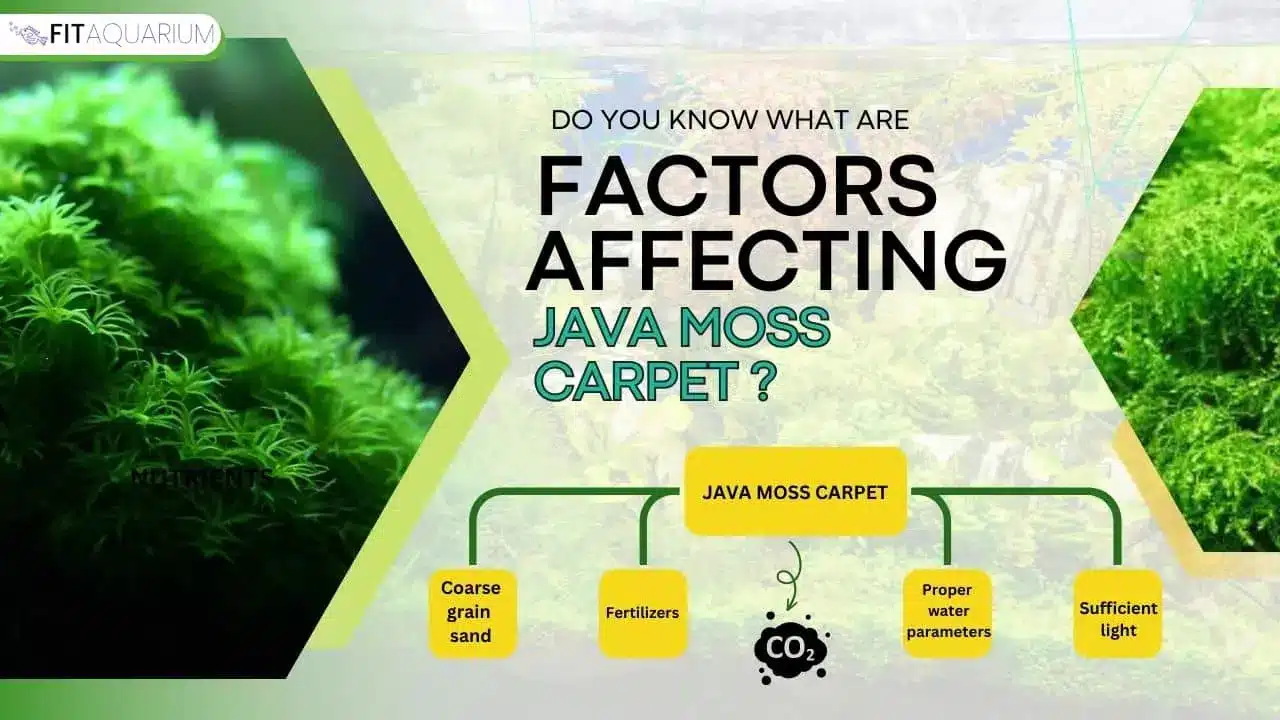
Coarse-Grain Sand
Aquariums can be filled with a variety of sand types. But, if the sand is too fine, it presents a challenge as it is too smooth for java moss rhizoids to grab on and would not allow them to develop properly.
I recommend you choose Course-grain Sand with a size of 1mm-2mm as it provides an easy way for rhizoids to adhere.
Aquariums benefit significantly from the “Trustleaf Natural Colour Silica Sand”. Because it is naturally colored and has a pH of zero.
Fertilizers
Java moss often doesn’t require any significant or heavy fertilizer. For its growth, Java moss obtains the majority of the necessary nutrients from wish waste and the water column in the aquarium. But if you want your java moss to develop more quickly, look for a properly balanced aquarium plant fertilizer.
Use liquid aquarium fertilizer for this purpose, since it provides all necessary nutrients for a denser and quicker growth of java moss carpet over sand.
Always keep in mind that over-fertilizing the java moss can cause algae problems. Too much fertilization results in excessive growth of java moss that is difficult to manage. Simply add a few drops to the tank once a week until java moss roots start to develop.
Proper Water Parameters
Java moss is adaptive to a wide range of water parameters. Water with a temperature range of 59-82°F (15-28°C) can support java moss. However, between 70°F and 75°F (21°C and 24°C) is the perfect temperature for the thick and wholesome growth of java moss carpet on the sand.
We suggest you use an aquarium heater to keep the temperature of the water at an appropriate level.
Java moss can handle a wider range of PH. It can thrive in water having a PH range between 5.0 to 8.0. However, what I personally noticed is that it prefers to grow best in a range of PH around 6 to 7.5.
Sufficient Light
Java moss is capable of tolerating many illuminating conditions. In an aquarium, java moss requires sufficient lighting for the photosynthetic process. It cannot produce its nourishment if enough light is not available to it. All of this contributes to its improper and unnatural growth.
Always remember that java moss and other aquatic species both suffer from excessive lighting. Too much lighting can promote the formation of algae, which can cause the rich, green java moss to turn brown.
Additionally, certain fish are aggressive and highly sensitive toward severe light. Therefore the best method to prevent this type of issue, go for 1-2 watts of light per gallon.
Carbon Dioxide
Java moss doesn’t need the supply of carbon dioxide (CO2) necessarily. But if your aquarium is densely planted, it requires some amount of CO2 to regulate the process of photosynthesis. A minor supply of CO2 enhances the growth of java moss. It can be supplied through a pressurized system.
Keep in mind that an increase in carbon dioxide had a bad impact on the aquarium. Too much CO2 can cause rapid growth of algae. Its supply can make a change in the temperature and PH of an aquarium.
The need to keep an eye on the carbon dioxide level is crucial. For this purpose, you can use a drop checker. It is capable of providing a precise reading of carbon dioxide without removing the water sample from the tank.
How Is Java Moss Attached to Sand?
Java moss needs to be anchored so that fish activity or water movement won’t disturb it and cause it to float over the surface. Here you’ll find expert methods for attaching Java moss to a sand bed.
- Single steel mesh method
- Sandwich method
- Using flat rocks

Now let us explore them one by one.
Single Steel Mesh Method
Using a single steel mesh or a grid is an effective way to create a carpet-like appearance of Java moss on sand. It can be used to create a moss wall too.
To use this technique, firstly you have to take some portions of java moss to attach to. Then lay this portion on the mesh and tie it tightly by a thread or fishing line. You can also use an aquarium-safe glue to stick java moss on the mesh. Finally, place the mesh on the sand surface in your tank. As the moss develops, you can remove the thread if you want.
NOTE: If you're using a plastic mesh, make sure you have placed some weights on it. So that it won't float over the surface of the water.
Sandwich Method
The sandwich method is just like the single-steel method. The only difference here is that a pair of steel meshes is used in this procedure instead of only one. However, this technique is also best for creating the background of an aquarium tank with java moss.
In this method, take a single mesh initially. Lay some patches of java moss and secure them to the single mesh by using thread or fishing line as mentioned above. After that put another mesh on top of it just like a sandwich. Both meshes can be joined together using either aquarium-safe glue (gel) or by tying their corners with fishing lines or thread. Rubber bands can be used for this purpose as well.
Over time, the moss will fill in the mesh openings and eventually resemble a thick, wholesome carpet.
Using Flat Rocks
To give your aquarium a natural look, java moss can be grown on flat rocks placed on the sand bottom.
Pick clean, flat rocks that are free of algae for this particular task. Cut the Java moss cluster into pieces that are about the size of each rock. Using aquarium-safe glue, attach each piece of Java moss to a rock. Allow enough time for the adhesive to dry. Put the rocks in your aquarium tank’s sand surface with care. Place these stones far enough apart because fully developed Java moss will eventually take up these gaps.
Note: Make sure that none of these rocks have sharp edges that may harm your underwater friends. I have the regret of harming my “Blu” due to this ignorance.
Steps to Plant Java Moss Carpet on Sand
As we have discussed vital factors for java moss growth, now let us move ourselves to a step-by-step process of planting a java moss carpet on a sand substrate aquarium.
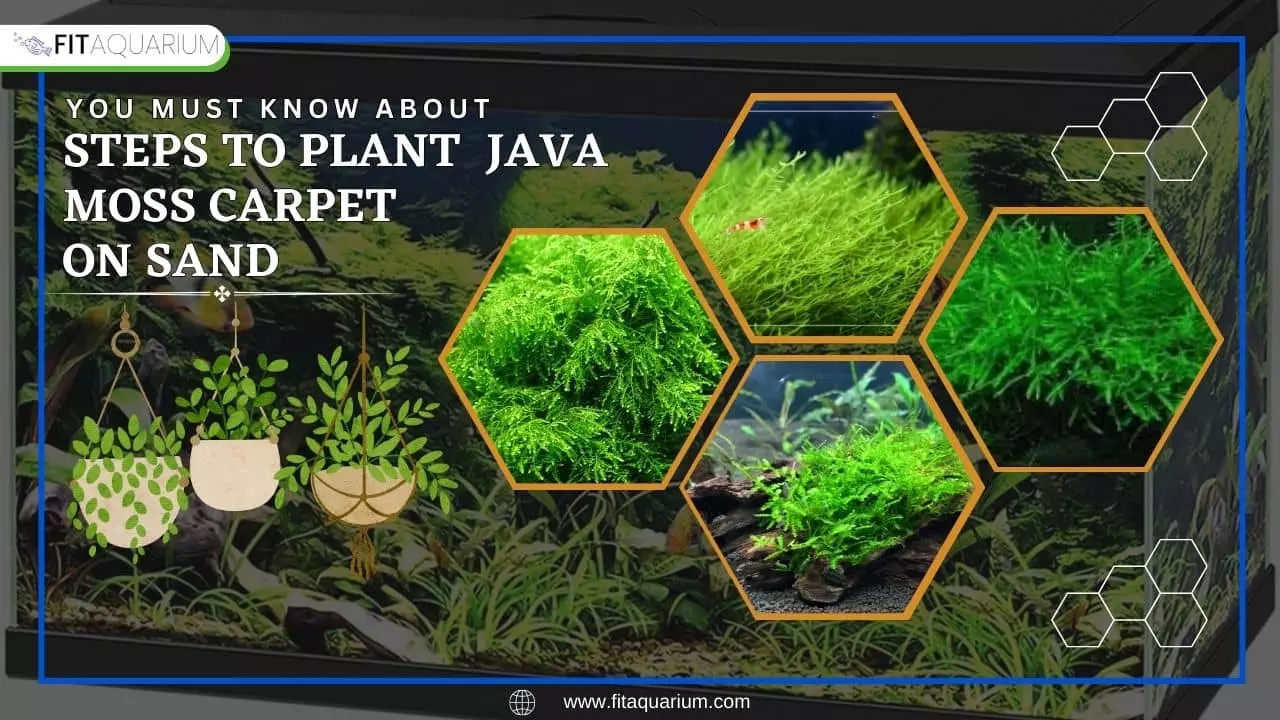
Step 1: To start, you must prepare the sand. So, take the coarse-grain sand and properly wash it under the tap to remove any dust or other particles that might harm your aquatic buddies.
Step 2: Place the cleaned sand in your aquarium tank. Fill the tank with sand until it is nearly 2-3 inches deep. However, if your aquarium is bigger, you can add extra sand to make it easier for the java moss to attach itself to the sand.
Step 3: After the addition of sand, it’s time to place the java moss in the tank. Carefully lay the java moss on the top of the sand by following one of the above-mentioned methods.
Step 4: Finally, fill up the aquarium with water. Just be careful while adding water to the tank because dumping water carelessly can damage the moss layout. Ensure no air bubbles are underneath the moss because it can prevent the java moss from adhering.
Step 5: As time goes on, Java moss starts growing and developing strongly. So be patient and wait for its final look.
If you follow these steps properly, the chances are quite high that you’ll see your lush green and bulky java moss carpet on the sand soon.
After-Plantation Care
Java moss is quite versatile in a variety of environments. After its plantation, it doesn’t require any particular care or maintenance. However, to keep it looking its best, don’t forget to maintain java moss after its plantation. If you pay a little attention after the plantation, it thrives.
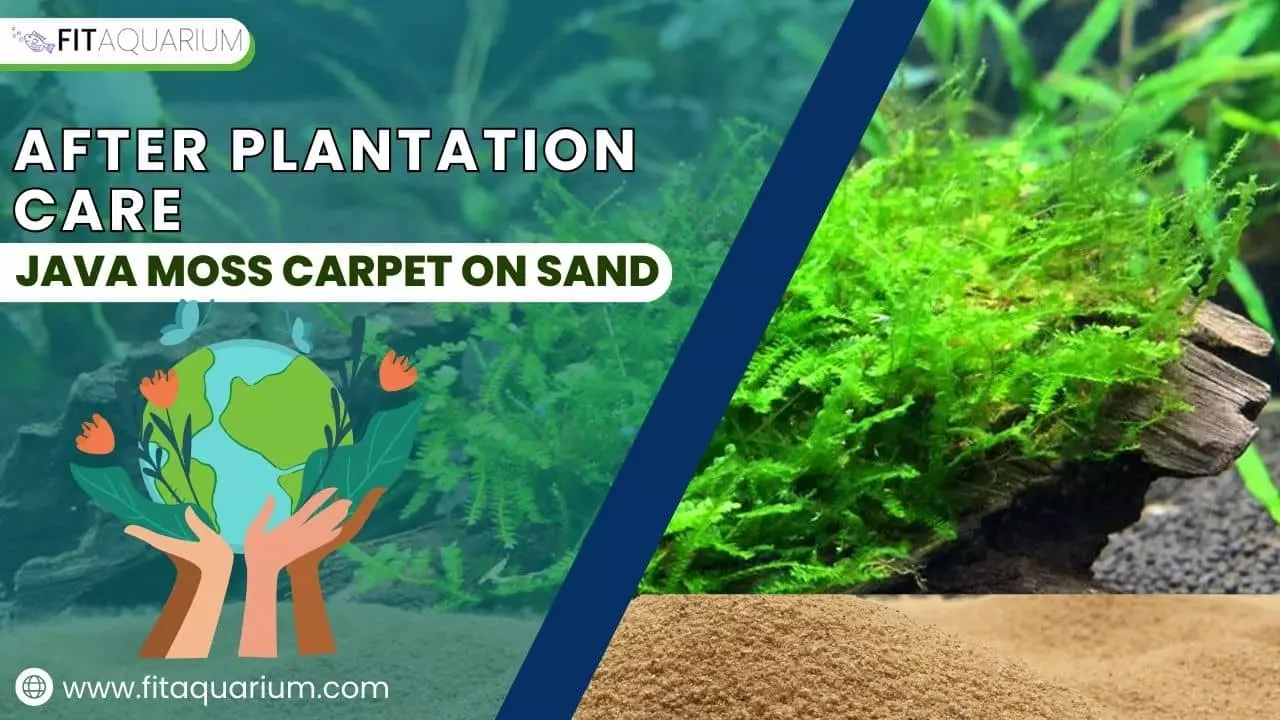
The following measures for maintaining the growth should be kept in mind:
Cutting and Trimming
Java moss typically grows between 1 and 1.5 inches every month. However, if the carpet in your aquarium is taking over the entire space and covering the other decorations, cut or trim the carpet to stop it from overgrowing. cutting is an easy way to cultivate your java moss’s creative and natural appearance.
Java moss needs to be regularly trimmed After one or two weeks. Simply scissors can be used to cut the surplus growth.
Conclusion
In my opinion, it’s preferable to use a substrate for your java moss other than sand. Sand isn’t the best choice for Java Moss carpeting. However, if you have no other option and you want to cover the bottom of your sand-surfaced tank with some greenery, then java moss can work well for this purpose. Making java moss carpet on sand isn’t too difficult when you carefully stick to the instructions given above. You’ll succeed if you pay close attention to the process.
Frequently Asked Questions
Here are some frequently asked questions about the topic “How to grow Java Moss Carpet on Sand?”
-
Can Java Moss be used as a carpet plant?
Yes, of course, Java Moss can be used as a carpet plant. It’s a popular choice for aquarists and aquascapers for having a natural lush green carpet in their tanks. Java Moss carpet also provides hiding spots for small aquatic species and thus promotes a healthy aquarium environment.
-
How long does Java Moss take to carpet?
The time it takes for java moss to completely cover the bottom of the tank may depend on various factors such as lighting, water conditions, and the addition of extra CO2 and fertilizers. However, typically, it takes anywhere from a few weeks to 3 to 4 months for java moss to create a full carpet in the tank.

